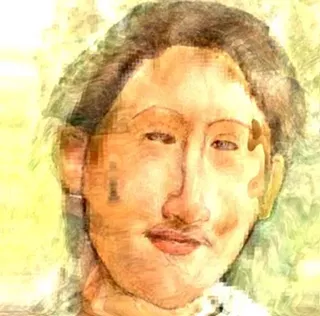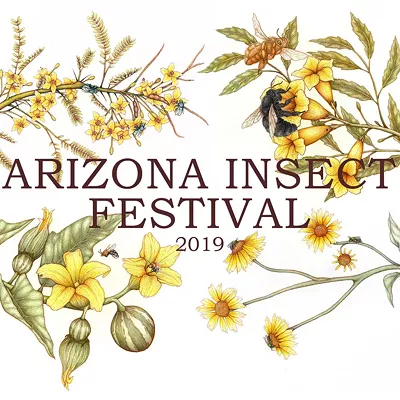Gómez-Peña is in Tucson right now, stirring up artistic trouble courtesy of the Museum of Contemporary Art. He and members of his troupe, La Pocha Nostra, are conducting workshops for 15 like-minded artists, the results of which will be displayed and performed on Saturday, Aug. 11, at MOCA.
Gómez-Peña is a smart guy (in the early 1990s, he received a MacArthur "genius" grant) and a quick thinker, so he didn't seem taken aback when I called last week with a rude question: What good is a radical artist in contemporary America, where even the supposedly liberal media are pretty conservative, and ideas that are even remotely progressive aren't taken seriously or given any real coverage in the mainstream culture?
"That's a very important and extremely pertinent question," he said, instantly beginning to reflect on the relevance of his work. "What good are critical artists in a society that no longer listens to the voice of the critical artist? Can a democracy exist without critical artists, without rebel artists? Can a society that does not pay attention to or tolerate or nurture the voices of dissent in the artistic community, can that society be considered a democracy? That is the ultimate question right now. What is the role of critical artists at a time when the political class and the corporations and the mainstream media do not care what we think, unless we are framed as 'extreme' entertainment, which is a fascination of pop culture?
"I feel that artists are still extremely important in contemporary America as spiritual and cultural leaders of our community, especially those who come from communities in despair. In the Latino-Chicano community, which is under attack right now by the Republican administration, when there is an immigration hysteria and a demonization of immigrants from the South, in the absence of enlightened politicians who can speak on our behalf, a lot of poets and novelists and actors and musicians are speaking for us. They are being pushed into the front of our communities and performing the indirect role and sometimes unwanted role of leadership."
Gómez-Peña's own work comes from what he calls a border perspective, specifically and literally a Mexican border perspective, but there's more to it than that. "I position myself as a post-national Mexican," he says, "one who migrated to the United States, one who works on both sides of border, who speaks from the United States side to Mexico and from the Mexico side to the United States, and one who has been engaged in binational art exchanges and dialogues for a big part of my life.
"The border is an intellectual zone, a creative zone, not merely a physical space. I don't 'store' myself in Mexico or the United States. Pocha Nostra is this wild performance troupe which is based loosely in San Francisco but has chapters in Mexico City, Oaxaca, Phoenix, New York City and other countries. We're a bunch of artists who have lived similar border experiences, who have left their original homelands and languages. In that sense, we talk about a border cultural perspective."
Gómez-Peña has established temporary artistic residencies in many of the places he mentioned; he's ready to move from Oaxaca, where he's been based for three years, and MOCA is hoping that he'll relocate his summer program to Tucson. As of last week, Gómez-Peña liked what he found here, but whether or not he comes back depends largely on the response to the Aug. 11 showcase. Pocha Nostra member Roberto Sifuentes, who is helping to conduct the workshops, describes the culminating event as "an exciting performance jam/open salon."
Beyond that, Sifuentes isn't yet sure of the specifics. It all depends on what develops from the workshops, how the artists interact with and challenge each other, and what they learn during their field trips around Tucson, visiting local sites and activists.
"What I can tell you," says Sifuentes, "is that it will take place in the studio spaces of MOCA, and several rooms will be activated by different workshop participants at different times of the evening. People don't have to be there from the first moment to the bitter end; they can come in and go out. It's like a living installation."
Adds Gómez-Peña, "All the spaces will be activated with live performances, rituals, installation pieces and interactive pieces. Some pieces will last several hours, and others will be very transitory. It's very casual, hopefully a lot of fun, just a humble attempt from the workshop participants to find a new way of presenting art.
"It's going to be a little messy, but really interesting. It's gonna be funky and, hopefully, intellectually provocative."











